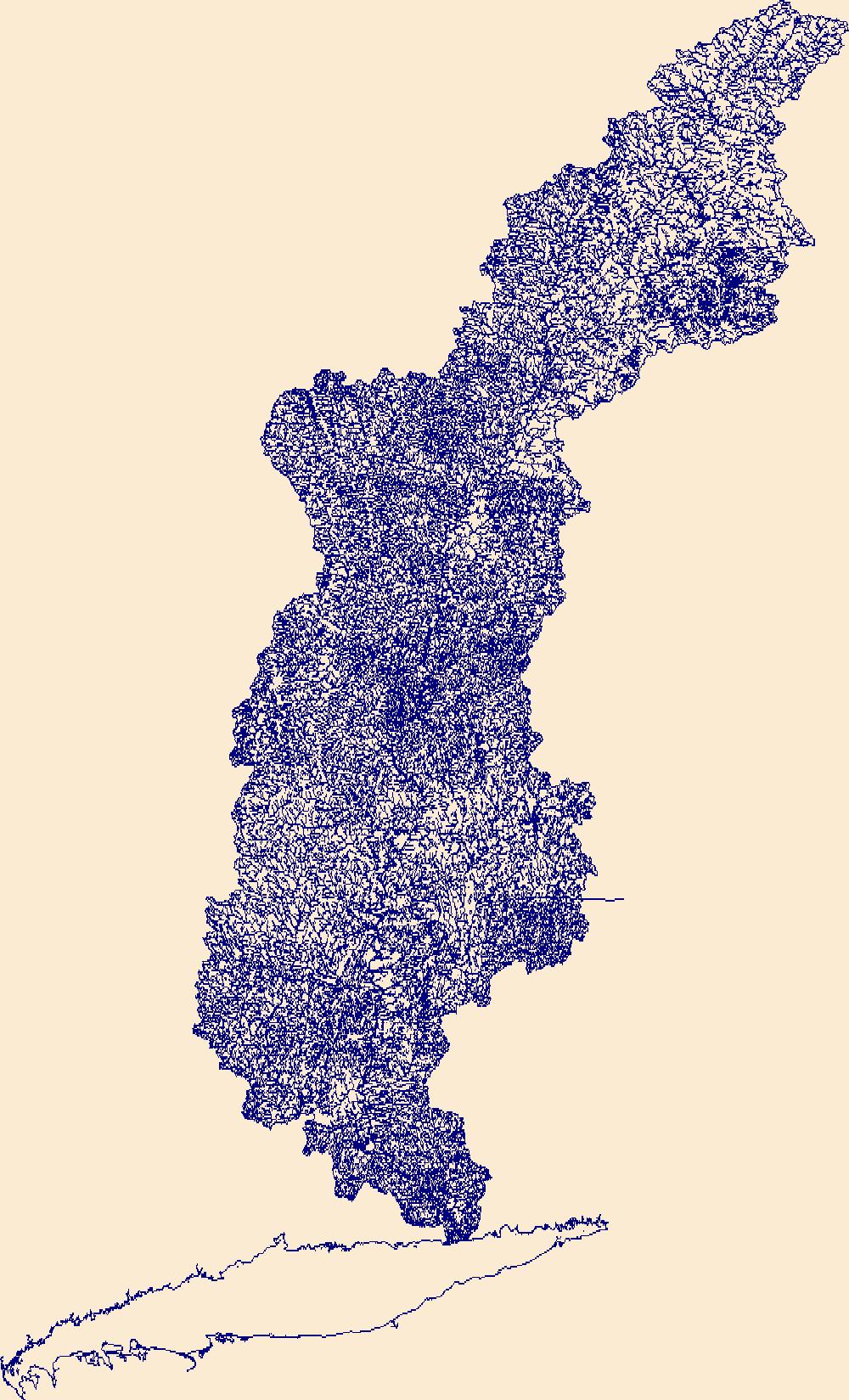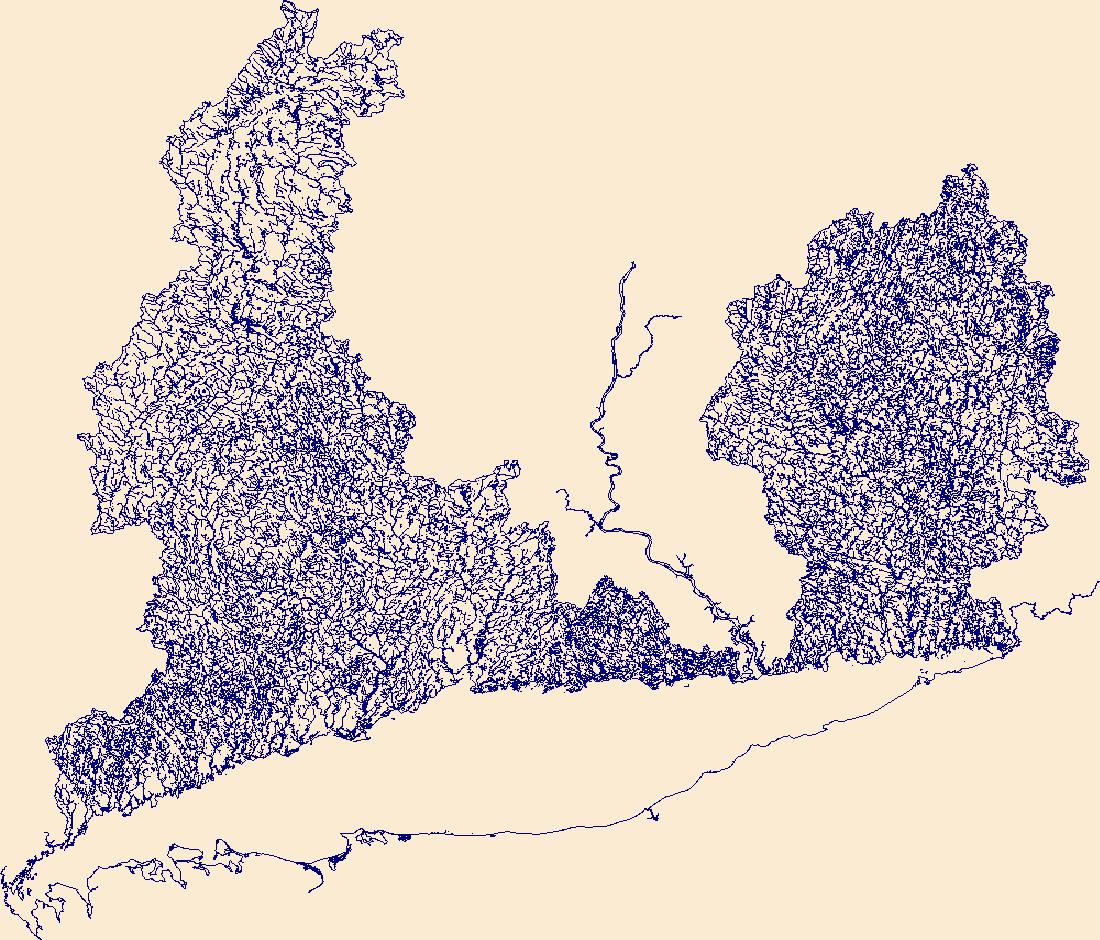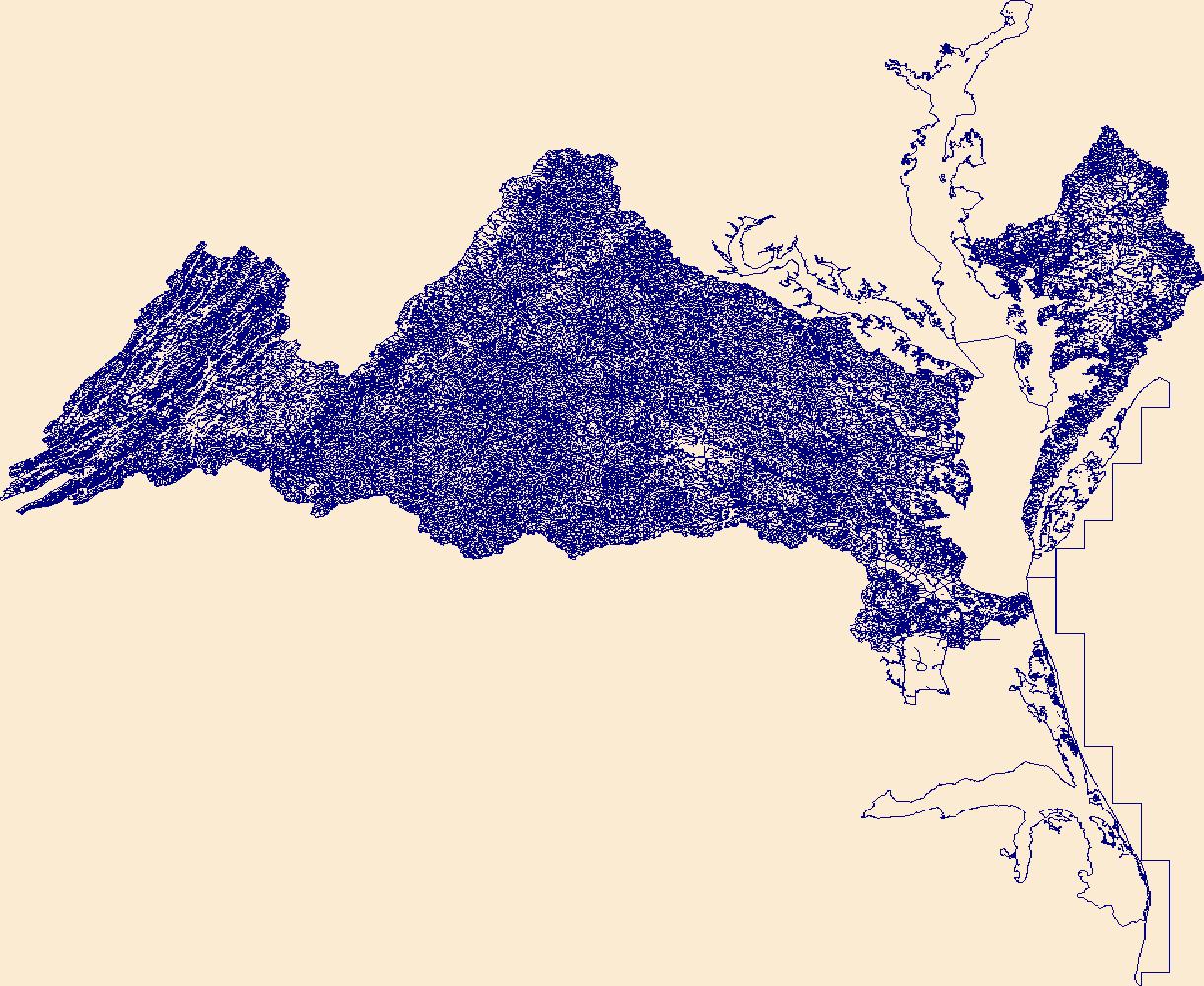Filters: Tags: Geographic Information Systems (X) > Date Range: {"choice":"month"} (X)
88 results (16ms)|
Filters
Date Types (for Date Range)
Types
Contacts
Categories Tag Types Tag Schemes |
LANDFIRE's (LF) 2022 Forest Canopy Cover (CC) describes the percent cover of the tree canopy in a stand. CC is a vertical projection of the tree canopy cover onto an imaginary horizontal plane. CC supplies information for fire behavior models to determine the probability of crown fire initiation, provide input in the spotting model, calculate wind reductions, and to calculate fuel moisture conditioning. To create this product, plot level CC values are calculated using the canopy fuel estimation software, Forest Vegetation Simulator (FVS). Pre-disturbance CC and Canopy Height (CH) are used as predictors of disturbed CC using a linear regression equation per Fuel Vegetation Type (FVT), disturbance type/severity, and...
LANDFIRE (LF) 2022 Fuel Vegetation Cover (FVC) represents the LF Existing Vegetation Cover (EVC) product, modified to represent pre-disturbance EVC in areas where disturbances have occurred over the past 10 years. EVC is mapped as continuous estimates of canopy cover for tree, shrub, and herbaceous lifeforms with a potential range from 10% to 100%. Continuous EVC values are binned to align with fuel model assignments when creating FVC. FVC is an input for fuel transitions related to disturbance. Fuel products in LF 2022 were created with LF 2016 Remap vegetation in non-disturbed areas. To designate disturbed areas where FVC is modified, the aggregated Annual Disturbance products from 2013 to 2022 in the Fuel Disturbance...

The High Resolution National Hydrography Dataset Plus (NHDPlus HR) is an integrated set of geospatial data layers, including the National Hydrography Dataset (NHD), National Watershed Boundary Dataset (WBD), and 3D Elevation Program Digital Elevation Model (3DEP DEM). The NHDPlus HR combines the NHD, 3DEP DEMs, and WBD to a data suite that includes the NHD stream network with linear referencing functionality, the WBD hydrologic units, elevation-derived catchment areas for each stream segment, "value added attributes" (VAAs), and other features that enhance hydrologic data analysis and routing.
The LANDFIRE (LF) Canadian Forest Fire Danger Rating System (CFFDRS) product depicts fuel types as an identifiable association of fuel elements of distinctive species, form, size, arrangement, and continuity. CFFDRS exhibits characteristic fire behavior under the specified burn conditions. In LF 2022 Canadian fuel models are derived from the Fuel Model Guide to Alaska Vegetation (Alaska Fuel Model Guide Task Group, 2018) and subsequent updates. The LF CFFDRS product contains the fuel models used for the Fire Behavior Prediction (FBP) system fuel type inputs. Default values assigned to the Canadian Fuel Models required to run the Prometheus fire behavior software (Prometheus, 2021) are added as attributes to the...
LANDFIRE's (LF) 2022 Forest Canopy Height (CH) describes the average height of the top of the canopy for a stand. CH is used in the calculation of Canopy Bulk Density (CBD) and Canopy Base Height (CBH). CH supplies information for fire behavior models, such as FARSITE (Finney 1998), that can determine the starting point of embers in the spotting model, wind reductions, and the volume of crown fuels. To create this product, plot level CH values are calculated using the canopy fuel estimation software, Forest Vegetation Simulator (FVS). Pre-disturbance Canopy Cover and CH are used as predictors of disturbed CH using a linear regression equation per Fuel Vegetation Type (FVT), disturbance type/severity, and time since...
LANDFIRE (LF) disturbance products are developed to provide temporal and spatial information related to landscape change. LF 2022 Fuel Disturbance (FDist) uses the latest Annual Disturbance products from the effective disturbance years of 2013 to 2022. FDist is created from LF 2022 Historical Disturbance (HDist) which in turn aggregates the Annual Disturbance products. FDist groups similar disturbance types, severities and time since disturbance categories which represent disturbance scenarios within the fuel environment. FDist is used in conjunction with Fuel Vegetation Type (FVT), Cover (FVC), and Height (FVH) to calculate Canopy Cover (CC), Canopy Height (CH), Canopy Bulk Density (CBD), Canopy Base Height (CBH),...

The High Resolution National Hydrography Dataset Plus (NHDPlus HR) is an integrated set of geospatial data layers, including the National Hydrography Dataset (NHD), National Watershed Boundary Dataset (WBD), and 3D Elevation Program Digital Elevation Model (3DEP DEM). The NHDPlus HR combines the NHD, 3DEP DEMs, and WBD to a data suite that includes the NHD stream network with linear referencing functionality, the WBD hydrologic units, elevation-derived catchment areas for each stream segment, "value added attributes" (VAAs), and other features that enhance hydrologic data analysis and routing.

The High Resolution National Hydrography Dataset Plus (NHDPlus HR) is an integrated set of geospatial data layers, including the National Hydrography Dataset (NHD), National Watershed Boundary Dataset (WBD), and 3D Elevation Program Digital Elevation Model (3DEP DEM). The NHDPlus HR combines the NHD, 3DEP DEMs, and WBD to a data suite that includes the NHD stream network with linear referencing functionality, the WBD hydrologic units, elevation-derived catchment areas for each stream segment, "value added attributes" (VAAs), and other features that enhance hydrologic data analysis and routing.
LANDFIRE's (LF) Annual Disturbance products provide temporal and spatial information related to landscape change. Annual Disturbance depicts areas of 4.5 hectares (11 acres) or larger that have experienced a natural or anthropogenic landscape change (or treatment) within a given year. For the creation of the Annual Disturbance product, information sources include national fire mapping programs such as Monitoring Trends in Burn Severity (MTBS), Burned Area Reflectance Classification (BARC) and Rapid Assessment of Vegetation Condition after Wildfire (RAVG), 18 types of agency-contributed "event" perimeters (see LF Public Events Geodatabase), and remotely sensed Landsat imagery. To create the LF Annual Disturbance...
LANDFIRE's (LF) 2022 Canopy Base Height (CBH) supplies information used in fire behavior models to determine the critical point at which a surface fire will transition to a crown fire in conjunction with other environmental factors, such as wind speed and moisture content. CBH data are continuous from 0 to 9.9 meters (to the nearest 0.1m) and describe the lowest point in a stand where there is enough available fuel (0.25in diameter) to propagate fire vertically through the canopy. Critical CBH is defined as the lowest point at which the Canopy Bulk Density (CBD) is .012kg m-3. Under different scenarios of disturbance and based on previous research incorporating plot-level CBH calculations, CBH for disturbed areas...
LANDFIRE (LF) 2022 Fuel Vegetation Height (FVH) represents the LF Existing Vegetation Height (EVH) product, modified to represent pre-disturbance EVH in areas where disturbances have occurred over the past 10 years. EVH is mapped as continuous estimates of canopy height for tree, shrub, and herbaceous lifeforms with a potential range of 0-100m. Continuous EVH values are binned to align with fuel model assignments when creating FVH. FVH is an input for fuel transitions related to disturbance. Fuel products in LF 2022 were created with LF 2016 Remap vegetation in non-disturbed areas. To designate disturbed areas where FVH is modified, the aggregated Annual Disturbance products from 2013 to 2022 in the Fuel Disturbance...
LANDFIRE (LF) disturbance products are developed to provide temporal and spatial information related to landscape change. LF 2022 Fuel Disturbance (FDist) uses the latest Annual Disturbance products from the effective disturbance years of 2013 to 2022. FDist is created from LF 2022 Historical Disturbance (HDist) which in turn aggregates the Annual Disturbance products. FDist groups similar disturbance types, severities and time since disturbance categories which represent disturbance scenarios within the fuel environment. FDist is used in conjunction with Fuel Vegetation Type (FVT), Cover (FVC), and Height (FVH) to calculate Canopy Cover (CC), Canopy Height (CH), Canopy Bulk Density (CBD), Canopy Base Height (CBH),...
LANDFIRE's (LF) 2022 update (LF 2022) Existing Vegetation Height (EVH) represents the average height of the dominant vegetation for a 30-m cell. EVH is produced separately for tree, shrub, and herbaceous lifeforms using training data depicting the weighted average height by species cover and Existing Vegetation Type (EVT) lifeform. Decision tree models using field reference data, lidar, and Landsat are developed separately for each lifeform, then lifeform specific height class layers are merged along with land cover into a single EVH product based on the dominant lifeform of each pixel. EVH ranges are continuous for the herbaceous lifeform category ranging from 0.1 to 1 meter with decimeter increments, 0.1 to 3...
The Louisiana State Legislature created the Coastal Wetlands Planning, Protection and Restoration Act (CWPPRA) in order to conserve, restore, create and enhance Louisiana's coastal wetlands. The wetland restoration plans developed pursuant to these acts specifically require an evaluation of the effectiveness of each coastal wetlands restoration project in achieving long-term solutions to arresting coastal wetlands loss. This data set includes mosaicked aerial photographs for the Hopedale Hydrologic Restoration (PO-24) project for 2021. This data is used as a basemap land-water classification. It also serves as a visual tool for project managers to help them identify any obvious problems or land loss within their...
Categories: Data;
Types: Downloadable,
GeoTIFF,
Map Service,
Raster;
Tags: CWPPRA,
Geography,
Gulf of Mexico,
Land Use Change,
Louisiana,
LANDFIRE's (LF) 2022 update (LF 2022) Existing Vegetation Height (EVH) represents the average height of the dominant vegetation for a 30-m cell. EVH is produced separately for tree, shrub, and herbaceous lifeforms using training data depicting the weighted average height by species cover and Existing Vegetation Type (EVT) lifeform. Decision tree models using field reference data, lidar, and Landsat are developed separately for each lifeform, then lifeform specific height class layers are merged along with land cover into a single EVH product based on the dominant lifeform of each pixel. EVH ranges are continuous for the herbaceous lifeform category ranging from 0.1 to 1 meter with decimeter increments, 0.1 to 3...
LANDFIRE’s (LF) Annual Disturbance products provide temporal and spatial information related to landscape change. Annual Disturbance depicts areas of 4.5 hectares (11 acres) or larger that have experienced a natural or anthropogenic landscape change (or treatment) within a given year. For the creation of the Annual Disturbance product, information sources include national fire mapping programs such as Monitoring Trends in Burn Severity (MTBS), Burned Area Reflectance Classification (BARC) and Rapid Assessment of Vegetation Condition after Wildfire (RAVG), 18 types of agency-contributed “event” perimeters (see LF Public Events Geodatabase), and remotely sensed Landsat imagery. To create the LF Annual Disturbance...
LANDFIRE's (LF) 2022 Forest Canopy Cover (CC) describes the percent cover of the tree canopy in a stand. CC is a vertical projection of the tree canopy cover onto an imaginary horizontal plane. CC supplies information for fire behavior models to determine the probability of crown fire initiation, provide input in the spotting model, calculate wind reductions, and to calculate fuel moisture conditioning. To create this product, plot level CC values are calculated using the canopy fuel estimation software, Forest Vegetation Simulator (FVS). Pre-disturbance CC and Canopy Height (CH) are used as predictors of disturbed CC using a linear regression equation per Fuel Vegetation Type (FVT), disturbance type/severity, and...
LANDFIRE’s (LF) 2022 Vegetation Departure (VDep) product categorizes departure between current vegetation condition and reference vegetation condition, according to the methods outlined in the Interagency Fire Regime Condition Class Guidebook (FRCC Guidebook (Hann et al 2010)). VDep differs from the FRCC Guidebook, however, because it is based on the departure of current vegetation condition only, whereas the FRCC Guidebook approach includes departure of current fire regimes for the reference period. For VDep, summary units are defined as a BioPhysical Setting (BpS) with identical reference condition values regardless of map zone. For example, when a BpS is present in map zone 1, 2, 4, 5, 6 and 8, the reference...

The High Resolution National Hydrography Dataset Plus (NHDPlus HR) is an integrated set of geospatial data layers, including the National Hydrography Dataset (NHD), National Watershed Boundary Dataset (WBD), and 3D Elevation Program Digital Elevation Model (3DEP DEM). The NHDPlus HR combines the NHD, 3DEP DEMs, and WBD to a data suite that includes the NHD stream network with linear referencing functionality, the WBD hydrologic units, elevation-derived catchment areas for each stream segment, "value added attributes" (VAAs), and other features that enhance hydrologic data analysis and routing.

The High Resolution National Hydrography Dataset Plus (NHDPlus HR) is an integrated set of geospatial data layers, including the National Hydrography Dataset (NHD), National Watershed Boundary Dataset (WBD), and 3D Elevation Program Digital Elevation Model (3DEP DEM). The NHDPlus HR combines the NHD, 3DEP DEMs, and WBD to a data suite that includes the NHD stream network with linear referencing functionality, the WBD hydrologic units, elevation-derived catchment areas for each stream segment, "value added attributes" (VAAs), and other features that enhance hydrologic data analysis and routing.
|

|